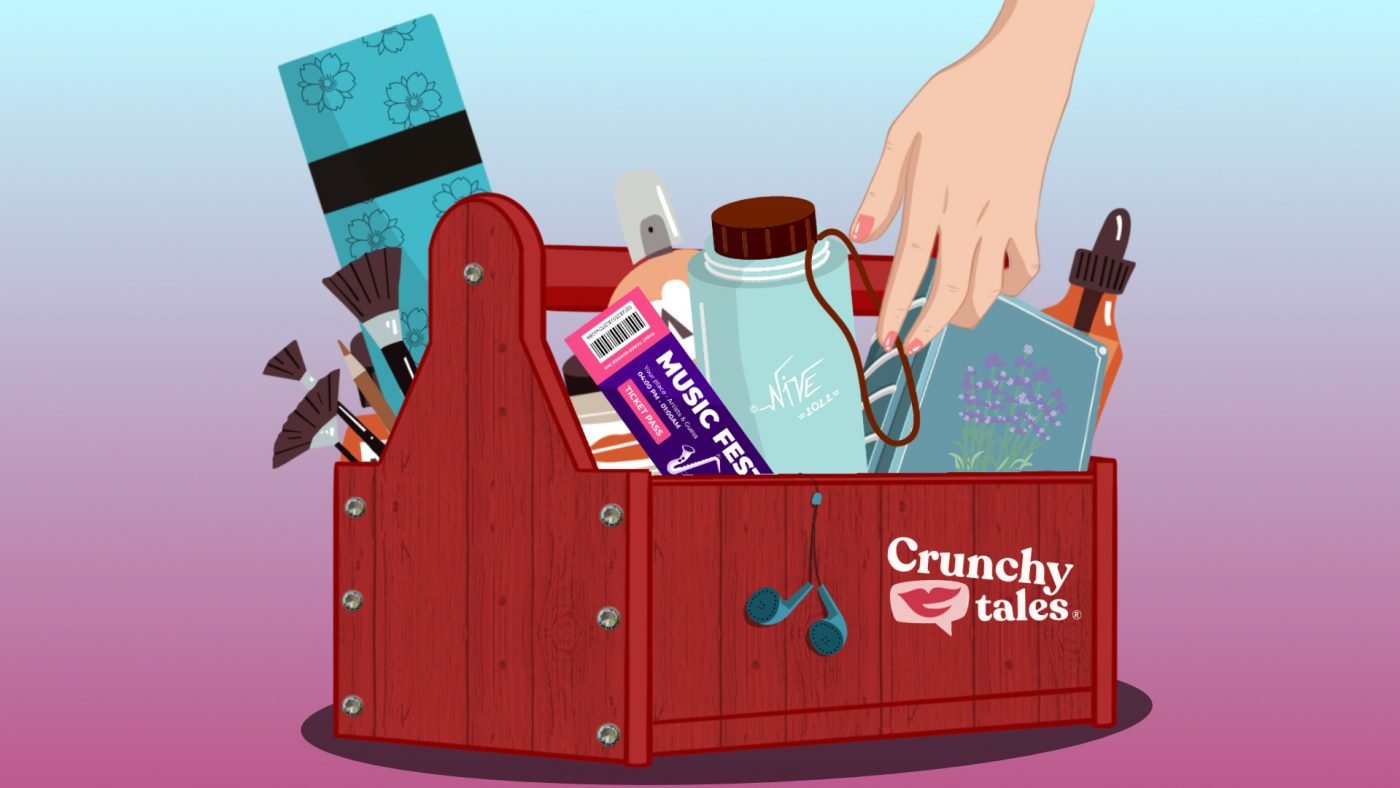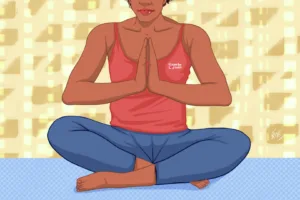Are You Stuck In A Rut? Quick Steps To Build Your Self-care Toolbox
It’s so easy today for many of us, midlife women, to get caught up with the “go-go-go-give-give-give” treadmill of life. Stress is one of the biggest self-care thieves: we can get stuck in a place where we are continuously saying yes and giving to others (making sure everyone else is OK and their needs are being met) while emptying our own cups without taking the time to get a refill.
Here lies the problem. When someone continues to go at this pace, without taking any time to pause and refill, eventually, they are going to run out of gas. Maybe even get irritable or tired or even hill. So, making some changes is a pretty good idea.
I know it may sound a little bit cliché, but self-care is like the old saying: “When the plane is going down, make sure to put your oxygen mask on first before you help someone else.”
By developing your own unique, one-of-a-kind Self Care Toolbox – a box (bag, or computer file) full of daily activities you can reach out for whenever you feel overwhelmed and need a break- you can activate the parasympathetic nervous system (PNS), which will help decrease stress and increase calmness, leading to more joy and happiness.
What is self-care?
Self-care has become a big buzzword lately. Some women fully believe in taking time for themselves, while others (like me) have completely dismissed the concept, thinking ‘I don’t have time for that kind of stuff.’
What does the term self-care mean to you? Bubble baths, massages, and mani-pedis or taking the time to journal and go to yoga, or eat a snack?
Self-care is defined as the practice of taking action to preserve or improve one’s health or taking an active role in protecting one’s own wellbeing and happiness. This would mean, that all of the above would be categorized as self-care, depending on the circumstances.
If you are suffering from digestive issues, headaches or feeling overtired and overwhelmed, you’ve increased negative self-talk, you’re anxious and oversensitive, then maybe it’s about time to take a moment to connect with yourself (emotionally, physically and spiritually) and ask yourself what you might need at any given moment.
Emotional self-care might be practising self-compassion, saying “no”, taking a pause, or setting up a weekly coffee date with a friend. While, physical self-care could look like prioritizing sleep, adopting a movement routine, and choosing a nourishing snack to fuel yourself. Spiritual self-care could be attending a religious service, spending time in nature, meditation, or journaling.
They are all important aspects of our life and there are no rights or wrongs here, just what feels good to you.
Getting started
Building your own self-care toolbox is an activity that you can do over and over again and that can help you identify which actions will kickstart your self-care journey.
I find different seasons bring in different “tools”; the most important thing is giving yourself permission for some quality time.
Start with taking out a piece of paper and a pen for a three minutes brainstorming session on each of the following prompts:
A. I love to…
B. To relax, I like to…
C. I flourish when….
This activity will provide you with a cheat sheet to help you fill your cup on a daily or weekly basis. It might be challenging at first, especially as you get older because making time for yourself is often the last thing on your own ‘to do list’, but still, the objective here is to make it easier to put YOU closer to the top of that daily list.
In case you are having any trouble getting started, think about your senses (smell, sound, sight, touch or taste) to complete the task. For example: “I love to listen to the waves in the ocean. I love to admire the colours in the sunrise. I love the feel of my comfy, cosy PJs, and I love the aroma in my kitchen as the coffee brews”.
Next Steps
Now, take a look at everything you’ve written in the lists above. If all you have is only an extra 5 minutes in between big meetings and commitments, then divide them up into different categories.
- Category ONE: “The Quicky”
Circle all the things you would be able to do in under five minutes and develop a habit of picking one of them whenever you are feeling stressed out. This might include singing a song, playing with your dog, watching a short YouTube clip, taking a dance break, lighting a candle or even stepping outside and taking a deep breath. Use “The Quickie” activities daily or multiple times a day if you can.
- Category TWO: “The Time-Out”
This might take a little longer. Find things on your list that you can do between 15-60 minutes and highlight those. Which activities in your toolbox do you want to engage in to live a more joy-filled life? Some examples might be journaling, colouring, reading, watching a sitcom, taking a walk, a bath, curling up with a good book, connecting with a friend for a virtual coffee chat or meandering around a library or bookstore. Try and use the “Time Out” most days of the week.
- Category THREE: “The Refill”
Put a star next to the rest of the activities and make them a priority at least on a weekly/monthly basis. They’ll most likely take you over an hour or more to do (like road trips, movies, massages, lunch with a friend, gardening etc), but this is your one and only life. If you don’t put them on your calendar, they will get pushed aside.
That’s it! You have now crafted your self-care toolbox. You can put these ideas in different jars, boxes or bags, or colour code them on one piece of paper to keep on your desk or fridge. The ideas for how and when to use these activities are endless.
You are going to be a week older next week, no matter what. You may as well experience more and more “peace and joy pockets” along the way.






